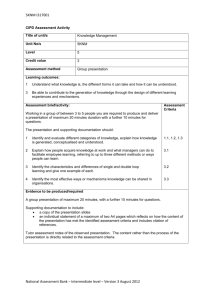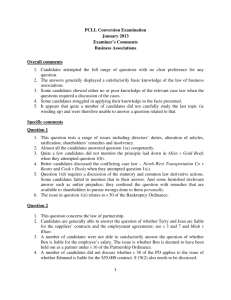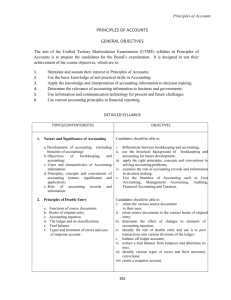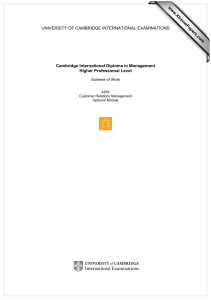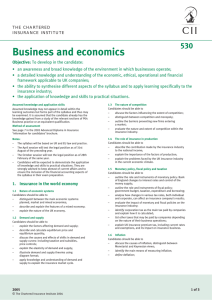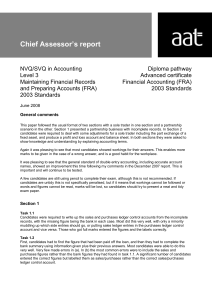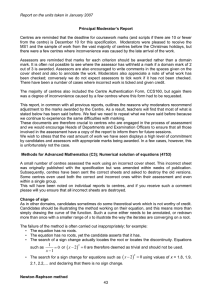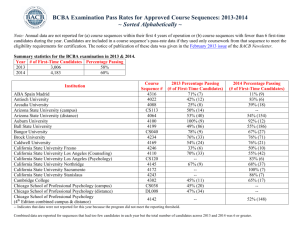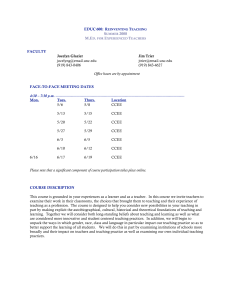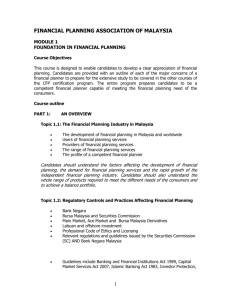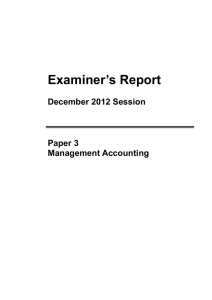CIPD Assessment Activity
advertisement
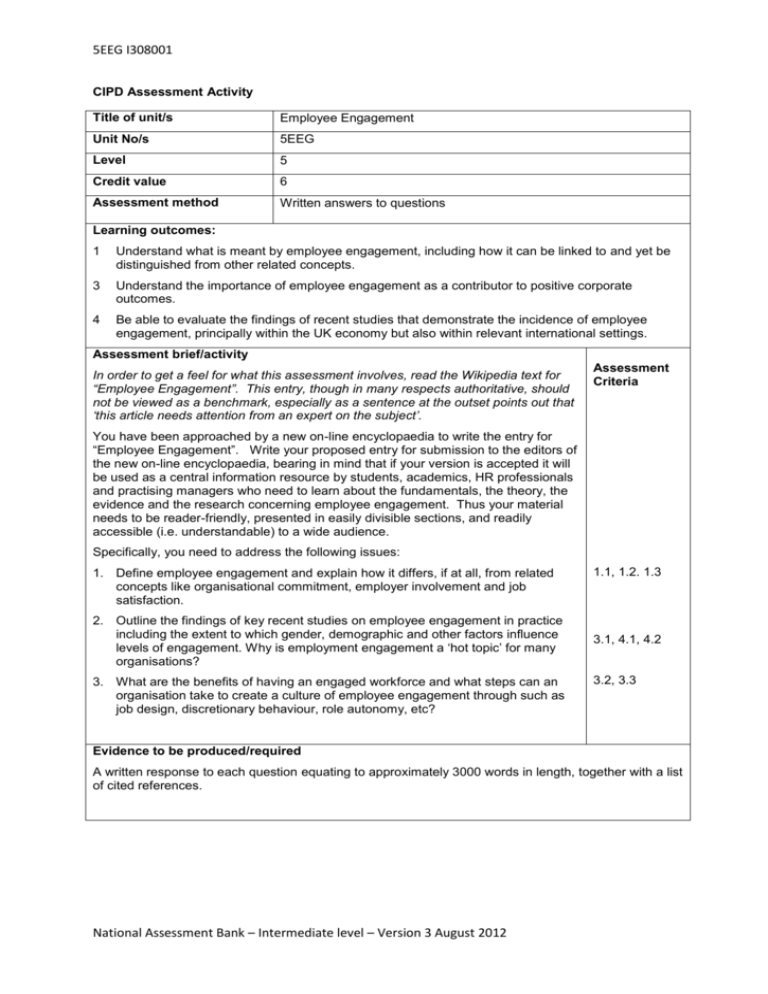
5EEG I308001 CIPD Assessment Activity Title of unit/s Employee Engagement Unit No/s 5EEG Level 5 Credit value 6 Assessment method Written answers to questions Learning outcomes: 1 Understand what is meant by employee engagement, including how it can be linked to and yet be distinguished from other related concepts. 3 Understand the importance of employee engagement as a contributor to positive corporate outcomes. 4 Be able to evaluate the findings of recent studies that demonstrate the incidence of employee engagement, principally within the UK economy but also within relevant international settings. Assessment brief/activity In order to get a feel for what this assessment involves, read the Wikipedia text for “Employee Engagement”. This entry, though in many respects authoritative, should not be viewed as a benchmark, especially as a sentence at the outset points out that ‘this article needs attention from an expert on the subject’. Assessment Criteria You have been approached by a new on-line encyclopaedia to write the entry for “Employee Engagement”. Write your proposed entry for submission to the editors of the new on-line encyclopaedia, bearing in mind that if your version is accepted it will be used as a central information resource by students, academics, HR professionals and practising managers who need to learn about the fundamentals, the theory, the evidence and the research concerning employee engagement. Thus your material needs to be reader-friendly, presented in easily divisible sections, and readily accessible (i.e. understandable) to a wide audience. Specifically, you need to address the following issues: 1. Define employee engagement and explain how it differs, if at all, from related concepts like organisational commitment, employer involvement and job satisfaction. 2. Outline the findings of key recent studies on employee engagement in practice including the extent to which gender, demographic and other factors influence levels of engagement. Why is employment engagement a ‘hot topic’ for many organisations? 3. What are the benefits of having an engaged workforce and what steps can an organisation take to create a culture of employee engagement through such as job design, discretionary behaviour, role autonomy, etc? 1.1, 1.2. 1.3 3.1, 4.1, 4.2 3.2, 3.3 Evidence to be produced/required A written response to each question equating to approximately 3000 words in length, together with a list of cited references. National Assessment Bank – Intermediate level – Version 3 August 2012 5EEG I308001 Guidance for Assessors for 5EEG (LO 1, 3 & 4) This guidance is for assessors only and should not be handed out to candidates. To achieve a pass, candidates should produce work equating to approximately 3000 words, which reflects the guidance given below. Candidates should relate academic concepts and theories and professional practice to the way organisations operate, in a critical and informed way, and with reference to key texts, articles and other publications and by using organisational examples for illustration. All sources should be supported by citations presented in the format that the centre determines. Activity 1 AC 1.1, 1.2, 1.3 Activity 2 AC 3.1, 4.1, 4.2 Activity 3 AC 3.2, 3.3 Candidates should offer a brief definition of employee engagement and include the principle dimensions; emotional, cognitive and physical. Candidates should explain if and how employee engagement differs from related concepts like organisational commitment, job involvement and job satisfaction, illustrating the discussion with appropriate examples. Drawing on current research into employee engagement, candidates should offer an explanation of the importance of employee engagement to the organisation, and demonstrate how gender, demographics and other related factors can influence employees to display different levels of engagement, and the consequences of this. Candidates should offer an analysis of the benefits of employee engagement to organisations for managers, employees and customers. There should also be a discussion of how job design, discretionary behaviour, role autonomy, etc can impact on employee engagement. National Assessment Bank – Intermediate level – Version 3 August 2012


